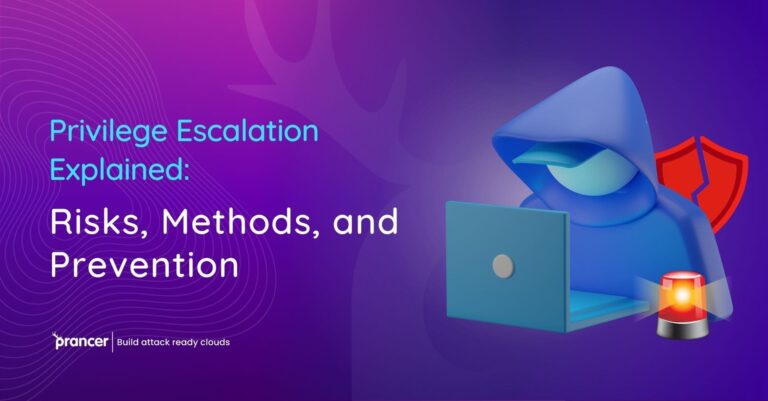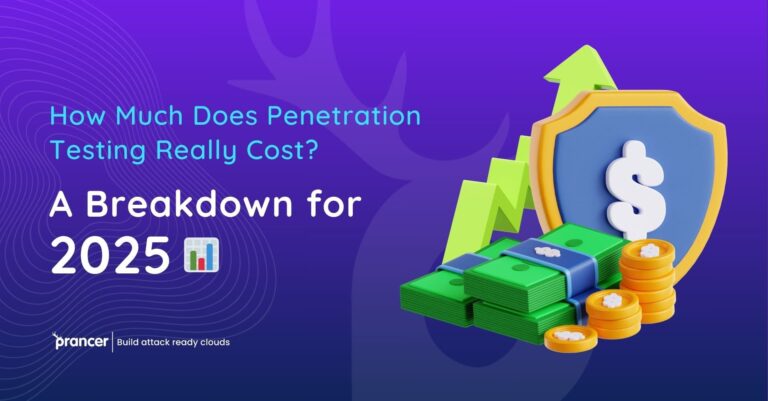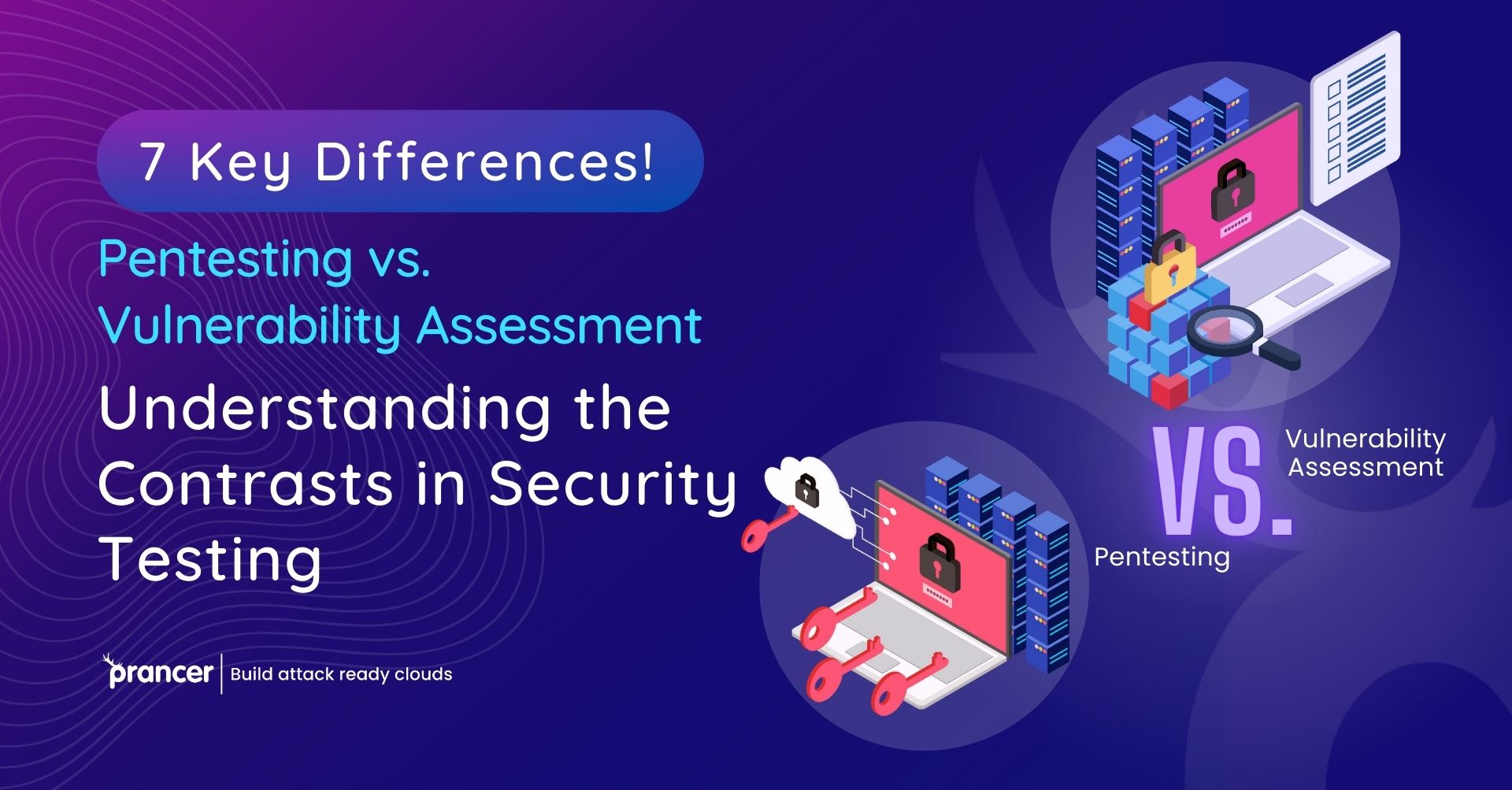




In the cutting-edge sphere of cybersecurity, differentiating between pentesting vs vulnerability assessment is paramount to creating a resilient defense strategy. These two critical methodologies often become entwined, creating confusion among professionals. This blog post dives into the contrasts of pentesting vs vulnerability assessment and highlights Prancer’s significant role in enhancing these security testing measures.
However, it is imperative to distinguish pentesting from vulnerabilities in the cybersecurity arena because this forms the basis of an adequate defense mechanism. Pentests that are automated, especially by way of Prancer’s unique approaches, serve a critical role in highlighting and improving such approaches. This blog post will discuss how Automation Penetration Testing is one of the main elements that bridge pentestings and vulnerability assessment to make their security defense system more complete.
When comparing pentrating testing and vulnerability assessment, Prancer provides an effective solution through automated penetartion testing. Prancer Technology has merged two security testing procedures to develop a new efficient approach for secure testing.
Automated penetration testing by Prancer is very important as it critically(). It allows important and efficient organizations to mimic and determine its weaknesses so that it can act effectively when such threats come.
Pentesting and vulnerability assessment can be increased using Prancer’s technology. In providing the best possible digital security, Prancer makes sure that it identifies and evaluates any weaknesses quickly and precisely through a focus on automated penetration testing.
The automated testing of penetration used by Prancer is an effective way to pinpoint genuine and duplicate vulnerabilities. By using two methods simultaneously, we can improve the security system of our organization. Indeed, the main cause of this method is to identify where the security gaps lying. Then it makes a simulation action out of attacking them. Hence it gives deeper insight into cyber resilience practices This mix of solutions has the ability to keep the business running against any threat from new generations.
In the always changing world of computer security, telling pentesting apart from vulnerability scanning is very important to make strong protection plans. The main difference is that penetration testing (pentesting) tries to use weaknesses in a computer system by pretending it’s being attacked, while vulnerability scanning looks for and sorts out possible security flaws without trying them. Prancer’s automatic security testing helps mix the two methods. This makes cyber protection better. It lets companies find weak spots and their real effects quickly. This all-in-one way by Prancer helps groups deal and remain strong against the ever changing world of online danger.
Central to defense in the dynamic cybersecurity landscape is Automated Penetration Testing (APT). As the cyber threats continue increasing, it is becoming more apparent that APT as part of security standards has become a liability. This general review aims at revealing the relevance of APT in bridging this gap between pentesting and vulnerability assessment where technologies such as those used by Prancer are seen.
Automated Penetration Testing: Redefining Cybersecurity Assessment
APT changes the approach to carry out security testing. APT simplifies pentesting and speeds the identification of vulnerabilities, increasing accuracy. APT differs from the traditional methods because it is based on highly advanced algorithms and machine learning that simulate cyberattacks, which means more precise detection of weak points with a high level of accuracy.
Distinctive Features of APT:
Rapid and Efficient Scanning: The APT tools scan systems fast, identifying the vulnerabilities much faster than any manual testing does it.
Standardized Testing: Automated tests allow the formation of a standard methodology for evaluations that significantly minimizes mistakes, made by human.
Extensive Scope: APT enables a more detailed security analysis by evaluating broader set of scenarios and attack vectors.
Intelligent Adaptation: With the introduction of machine learning, APT systems have become smarter with every encounter as they learn and evolve in their response towards newer threat patterns.
Synergy with Conventional Methods:
APT does not eliminate the classical pentesting and vulnerability assessment but they only become better. It readily detects weaknesses for which a later manual pentest may yield insights into the operational ramifications of these security concerns.
Prancer’s Approach to APT:
Other noteworthy features of Prancer’s APT methodology are its overall approach and integration. Prancer makes APT an integral part of more traditional approaches that provide a broad, holistic security assessment along with enough detail. This coordinated approach ensures that not only are the shortcomings detected but also analysed for potential utilisation and counteractions.
Case Studies in APT Application:
Effectiveness of APT can be seen from many case studies and in the light of Prancer’s frame work. For instance, a financial institution employed the Prancer APT tools to detect covert vulnerabilities that no other professional had previously uncovered. This allowed them to adopt preventative security practices that significantly improved their cyber defense.
Future Trajectory of APT:
APT has a lot of potentials: as cyber threats have dynamic nature, more powerful and decision tools in the form of Artificial Intelligence will be created to fight them. The form that APT can be expected to take is primary defense mechanism backed by manual testing and vulnerability assessments being secondary though vital layers in the area of security.
The Prancer Advantage in APT:
A new precision and speed become possible with the introduction of Prancer’s implementation of APT. With its focus on automated penetration testing, Prancer can narrow down vulnerabilities quickly and precisely. This approach allows timely adapting organizations to new cyber-threats.
APT’s Role in Proactive Cyber Defense:
APT empowers organizations to act more proactively on cyberattacks. By anticipating threats before attackers get the chance to exploit them, APT plays an advanced role of helping organizations prepare ahead of strikes. It is a radical shift in the battle against cyberthreats from defensive to offensive security.
Incorporating APT into Security Cultures:
The increasing prevalence of APT makes it necessary, therefore, to gradually integrate the criminal network into organizational security culture. Teams should be trained on the benefits and inner mechanisms of APT for it to work best. Second, this training should not only be for the IT department but needs to spread out through every member of the stakeholder and analysis in-depth about APT into an organization’s overall security strategy.
Finally, Automated Penetration Testing is revolutionizing the world of cybersecurity. APT does not only complete methods for security testing but also changes the laws of cybersecurity audit by presenting an effective, accurate and deeper approach. With Prancer and other pioneering organizations, APT looks set to play a crucial role in the fight against cyber attacks as well as an era of sovereign digital security.
Understanding the contrasts in pentesting vs vulnerability assessment is essential for any cybersecurity strategy. With Prancer’s innovative technology and automated penetration testing, these distinctions are not only clarified but also utilized to fortify digital defenses. Navigating the complex interplay of pentesting vs vulnerability assessment, with Prancer as a guide, empowers organizations to emerge robust and resilient in the face of ever-changing cyber threats.
